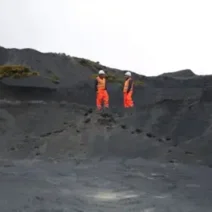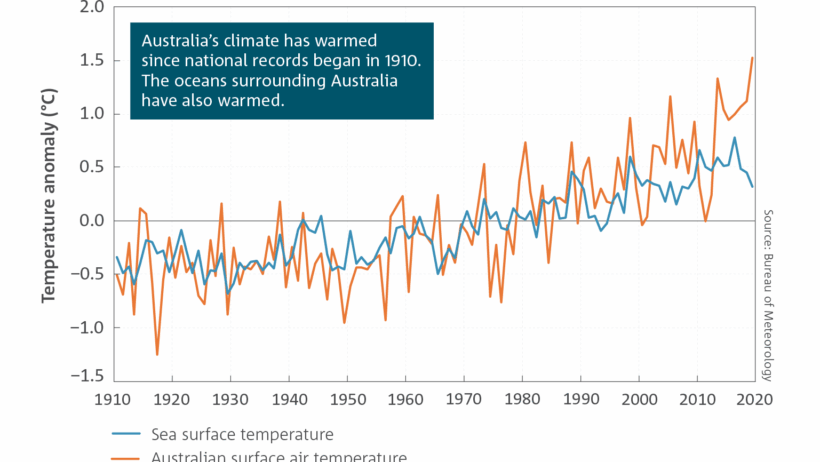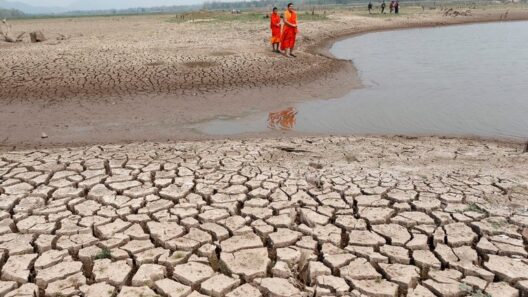In the intricate tapestry of global warming, one of the most intriguing yet often overlooked aspects is that of phase change. The phenomenon of phase change is crucial in understanding the myriad interactions between climate systems and the chemistry at play, presenting an opportunity for a paradigm shift in how we comprehensively perceive climate change. The implications of phase changes extend far beyond the melting of ice or the vaporization of water; they permeate through atmospheric processes, geochemical feedbacks, and even the biological responses of various ecosystems.
At its core, phase change involves the transformation of a substance from one state of matter to another: solid, liquid, or gas. This transformation is typically driven by the absorption or release of energy, a process fundamentally tied to temperature and pressure dynamics. When one examines the climate crisis, understanding phase changes becomes paramount, particularly in the context of water—one of Earth’s most vital substances. Water’s unique properties exhibit profound ecological and atmospheric consequences, dictating weather patterns, ocean currents, and the overall balance of energy across the planet.
To grasp the climatic implications of phase changes, one must first consider the phase diagram of water. This diagram illustrates the different phases of H2O and the conditions under which these transitions occur. For example, as global temperatures rise due to anthropogenic influences, water stationed as ice in the polar regions undergoes melting, which shifts more liquid water into the oceans. This transference not only contributes to rising sea levels but also alters salinity gradients, further impacting oceanic circulation patterns.
Moreover, the melting of polar ice sheets invites a more frenetic and chaotic atmosphere. The albedo effect, which refers to the reflectivity of Earth’s surface, is altered when reflective ice is replaced by absorbent water or land. Darker surfaces absorb significantly more solar radiation, leading to local temperature increases, which, in turn, initiates further phase changes. This feedback loop exemplifies the interconnectedness of Earth’s systems, where alterations in one domain reverberate throughout others.
Furthermore, vaporization is another critical phase change that warrants attention. As sea surface temperatures rise, increased evaporation leads to higher concentrations of water vapor in the atmosphere. Water vapor, as a greenhouse gas, holds the power to trap heat, thus exacerbating the greenhouse effect. The intricate balance of humidity can lead to extreme weather phenomena, including intensified hurricanes, prolonged droughts, and extreme rainfall. Such meteorological volatility wreaks havoc on agricultural systems, freshwater resources, and biodiversity.
Phase change also plays a pivotal role in the carbon cycle, particularly through the interaction of water with carbon dioxide. The solubility of CO2 in seawater is contingent upon temperature. As oceans warm, their capacity to sequester CO2 diminishes, leading to an increased concentration of this greenhouse gas in the atmosphere. Simultaneously, warmer waters can prompt the release of carbon stores from the seabed, such as methane hydrates, resulting in a perilous feedback loop where warming leads to more warming.
In addition to affecting carbon dynamics, phase changes are integral to understanding the precipitation cycle. As the atmospheric concentration of water vapor increases, cloud formation and precipitation patterns are altered, influencing everything from freshwater availability to soil moisture levels. Changes in precipitation can disrupt ecosystems, lead to desertification, or result in severe flooding, all of which have dire consequences for both human and wildlife populations.
Moreover, the melting of glaciers is not merely a reflection of rising temperatures; it also constitutes a formidable threat to the availability of freshwater for countless communities and ecosystems dependent on glacial meltwater. The synchronous nature of these changes raises questions about the capaciousness of our natural reservoirs and their ability to adapt to rapid alterations in climate. The knock-on effects on agriculture, hydrology, and ecosystem services signify an urgent need for interdisciplinary approaches to manage these shifting realities.
One might also ponder the role of the chemistry behind phase changes beyond physical manifestations. The process of crystallization—or the lack thereof—can induce profound transformations at the molecular level. For example, changes in temperature can affect the solubility of various minerals, which can lead to the precipitation or dissolution of essential nutrients in soils and water bodies. Such transformations have cascading effects on terrestrial and aquatic ecosystems, influencing flora and fauna resilience and adaptation strategies.
As we delve deeper into understanding these complex interactions, it becomes increasingly evident that addressing climate change necessitates a multifaceted approach—one that recognizes the significance of phase change in climatic feedback loops. The promises of such a shift in perspective are not just academic; they have real-world implications for policy-making, community resilience, and sustainable resource management.
Ultimately, phase change serves as an unseen yet powerful force influencing our planet’s climate system. From the polar ice caps to the vast expanses of oceans, the transformations occurring at fundamental levels are redefining what it means to live on a warming planet. Emphasizing the importance of these processes in discussions surrounding mitigation and adaptation strategies can potentially galvanize collective action and foster a deeper understanding of our environmental responsibilities.
As we stand on the cusp of potential climate catastrophe, it is imperative to cultivate a nuanced understanding of the factors contributing to global warming. Acknowledging and elucidating the complex dynamics of phase change could be the key to unlocking more effective strategies in our global efforts to combat climate change and its far-reaching impacts.







